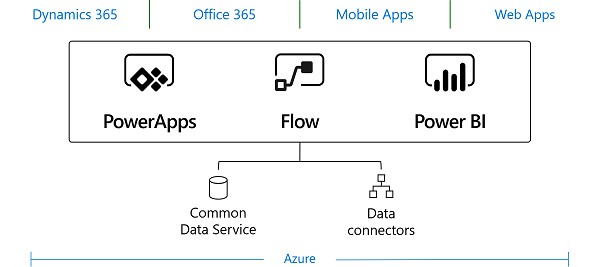Common Data Service for Apps
Common Data Service (CDS) for Apps is an Azure based work application platform, which allows you to create and develop applications through data created by work applications.
Common Data Service (CDS) for Apps, combines all data stored separately in all applications in 365 solution family such as Finance, Business Central and Sales (CRM) and allows you to use common data service. It allows integrating applications and sharing them without needing special integration interventions.
It also allows a more efficient work thanks to its structure that is integrated with PowerApps, Power BI and Microsoft Flow applications. In this way, the companies can focus on their process automations.


